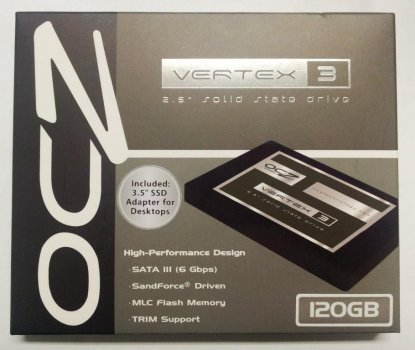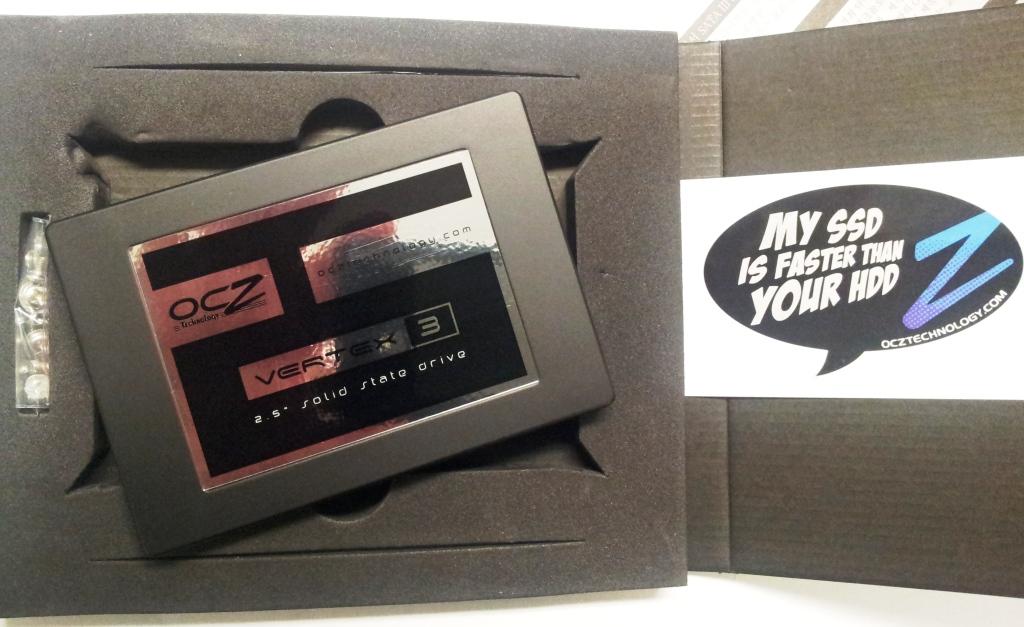 In preparation for a review of the Vertex 4 from OCZ we were given the Vertex 3 to test. The Vertex 3 has been out for quite some time now so plenty of review material is around for this reasonably priced SSD. So we’ll keep this one short but we’ll have one important recommendation to make….
In preparation for a review of the Vertex 4 from OCZ we were given the Vertex 3 to test. The Vertex 3 has been out for quite some time now so plenty of review material is around for this reasonably priced SSD. So we’ll keep this one short but we’ll have one important recommendation to make….
Our last review of the previous model, the Vertex 2, ended catastrophically. Why?
Not even 6 months after we gave the Vertex 2 a high score, this SSD went into catastrophic meltdown…
We went to a couple of top data recovery companies to see if any data could be restored but it seems that every SSD has its unique controller (which was the item that failed) and apparently even OCZ themselves could not help here either! This is the third SSD (various brands) we’ve tested that failed totally.
So we were careful to write down our findings of this model until we had enough time under our belt. We normally do that anyway but certainly this time around. Long story short: so far so good…
The V3 is all you’d need for a pretty fast, reasonably capacious drive at a good price point. For background information on the Vertex range have a look at our earlier review. Let me add this on OCZ: They have become a major player in the league of SSD makers. Sure, Samsung, Micron and, of course, Intel are the top dogs here but OCZ is nipping at their heels. They now have their own controllers (bought out Indilinx) but for the current Vertex range still use the SandForce controller. OCZ has to buy the critical NAND component in from either Intel, Micron, Spectek or Hynix. I’m not sure how much they differ from each other apart from chip size, either 25nm, 32 or 34nm. There can also be slight quality variations in the NAND manufacturing. Using the higher densities can lead to other problems in performance however and OCZ did allow end users to swap 25nm Vertex 2s for 34nm drives at some stage… I think the performance vs density issue has been sorted out by now.
 If you buy a SSD because of speed (is there really any other reason??) you won’t be disappointed if you replace any HDD. The difference is phenomenal. There are, of course, differences between brands and models and even a specific model like the V3 can have different performance figures. So don’t stare yourself blind on what the box says! The Vertex 3 is billed with impressive specifications of 550 MB/sec read speeds and 500 MB/sec write speeds. That’s the best case scenario with compression. Other data, like pictures may not be so compressible so the throughput will be a lot lower.
If you buy a SSD because of speed (is there really any other reason??) you won’t be disappointed if you replace any HDD. The difference is phenomenal. There are, of course, differences between brands and models and even a specific model like the V3 can have different performance figures. So don’t stare yourself blind on what the box says! The Vertex 3 is billed with impressive specifications of 550 MB/sec read speeds and 500 MB/sec write speeds. That’s the best case scenario with compression. Other data, like pictures may not be so compressible so the throughput will be a lot lower.
Interestingly, the higher capacity drives, like the 240GB model, have the potential to be quite a bit faster because of the architecture. But, as always, we’re looking at the Value-for-Money factor and the Vertex 3, not being the newest kid on the block, can deliver outstanding results for a decent price. You should be able to source a 120GB model in Australia for around the 150 dollar mark. In the meantime, do make your backups, whether you use SSDs or HDDs…
We’ll do a full featured review on a higher capacity Vertex 4 once that has been shipped and will include some benchmarks charts for the aficionadas.


